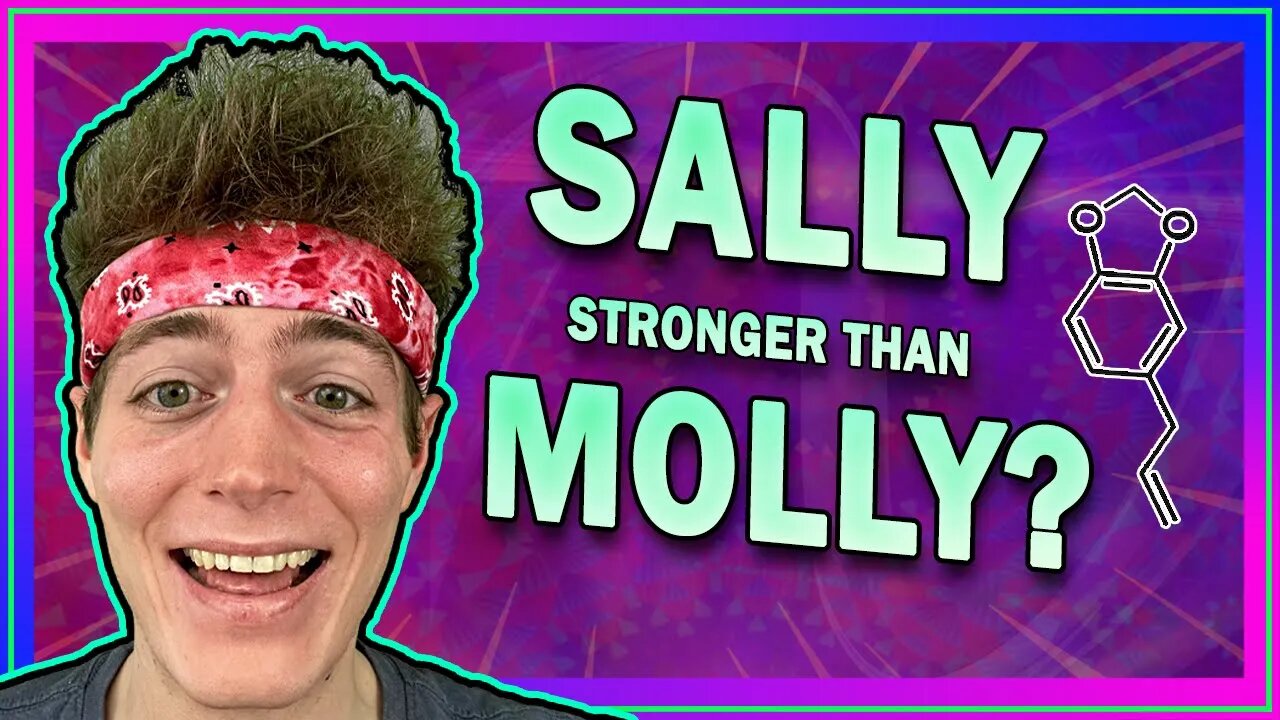Premium Only Content

𝗠𝗗𝗔 (𝗦𝗮𝘀𝘀𝗮𝗳𝗿𝗮𝘀): More Potent than MDMA? (𝘔𝘰𝘭𝘭𝘺'𝘴 𝘚𝘪𝘴𝘵𝘦𝘳)
MDA is an entactogen and stimulant that can provide some psychedelic effects. It’s often compared to MDMA, which it resembles in many ways. They differ in that MDA is usually more stimulating, more psychedelic, and lasts a little longer.
► INSTAGRAM: @lowkey_fish ◄
https://instagram.com/lowkey_fish
► TWITTER: @lowkey_fish ◄
https://twitter.com/lowkey_fish
╔═╦╗╔╦╗╔═╦═╦╦╦╦╗╔═╗
║╚╣║║║╚╣╚╣╔╣╔╣║╚╣═╣
╠╗║╚╝║║╠╗║╚╣║║║║║═╣
╚═╩══╩═╩═╩═╩╝╚╩═╩═╝
Watch my next video to learn about MDMA (Molly / Ecstasy)!
https://youtu.be/dxmiER2G1RU
Copyright ©️ 2022 Lowkey Fish. All rights reserved.
__________________________________________________________________________________________
This video articulates the gist of the following: Sassafras is a hallucinogen that’s also known as methylenedioxyamphetamine (MDA). You might also hear it called sass or sally. It’s derived from the oil of the sassafras plant. This oil, called safrole, can be used to make MDA. MDA causes your brain to release more chemicals called neutrotransmitters, which produces the high. Sassafras (methylenedioxyamphetamine) and molly (3,4-methylenedioxymethamphetamine) have a lot of similarities beyond their almost identical chemical names. MDA is actually a minor metabolite of molly. In fact, commonly used molly tests, including the Marquis reagent, can’t differentiate between the two. They also cost about the same. Sassafras is sometimes sold as molly, too. Sassafras usually comes in pill form. It can also be found in capsules or as a white powder that can be consumed or sniffed. Not all batches of this drug are exactly the same and can vary depending on the source. Ingredients can also vary, even if you think you’re getting “pure” sassafras. As with other drugs, pills or powder are sometimes cut with other toxic chemicals. 3,4-Methylenedioxyamphetamine (also known as MDA and sass) is an empathogen-entactogen, psychostimulant, and psychedelic drug of the amphetamine family that is encountered mainly as a recreational drug. In terms of pharmacology, MDA acts most importantly as a serotonin–norepinephrine–dopamine releasing agent (SNDRA). MDA (3,4-methylenedioxyamphetamine), often called “sass,” “sassy,” or “sassafras,” is a psychoactive substance that was difficult to classify for much of its existence. Initially described as a unique psychedelic with an unusually powerful emotional component, MDA’s more precise classification as an entactogen didn’t occur until after the discovery of MDMA—a discovery that was partly inspired by MDA. While entactogenic drugs often possess some qualities of other drug classes, such as psychedelics or stimulants, they are specifically characterized by their tendency to produce feelings of closeness with others, relatedness, and emotional openness. MDA’s history began with its initial synthesis in 1910, but its psychoactivity in humans wasn’t discovered until 1930 following its first documented ingestion by American chemist Gordon Alles. In the decades after, MDA was tested by various pharmaceutical companies as a potential treatment for Parkinson’s disease, depression, obesity, and the common cough. Under the codename “EA-1298,” it was once even investigated as a potential interrogation drug by the U.S. military. As a result of MDA’s addition to Schedule I of the U.S. Controlled Substances Act in 1970, formal research of the drug effectively came to an end. The discovery of the effects once unique to the drug, however, paved the way for future interest in the therapeutic uses of entactogens, such as modern research into MDMA for treating post-traumatic stress disorder. MDA and MDMA are often compared to one another for a number of reasons: Both belong to the same drug classes, are generally used in the same settings, and have historically been encountered in the same forms. At face value, it may be easy to consider the two substances interchangeable, but MDMA and MDA are two distinct drugs, each with their own unique dosages, durations, and effects. A closer look reveals the more subtle differences that set each substance apart. The most immediately apparent difference between the two lies in their names. MDA’s full chemical name is 3,4-methylenedioxyamphetamine, while MDMA’s is 3,4-methylenedioxymethamphetamine. Though their lengthy names differ only slightly, the four additional letters in MDMA’s name, “meth,” indicate that the MDMA molecule has one additional carbon atom and two additional hydrogen atoms compared to MDA.
.
#MDA #Sally #Sass #Sassafras
.
Find me literally anywhere on the internet! Here is ALL of my links:
https://linktr.ee/lowkeyfish
-
 11:04
11:04
Lowkey Fish 🐠
2 months agoNative Americans & Fans DEMAND the Washington Redskins back!!
1732 -
 2:59
2:59
LimitlessAmbition
1 day ago $9.88 earnedPROVE THEM WRONG With This POWERFUL Motivation!
100K2 -
 8:31:37
8:31:37
G2G Gaming Channel
16 hours agoGive me my Helmet, Im going in!! #RumbleGaming
106K2 -
 4:45:11
4:45:11
MoFio23!
14 hours agoNintendo Switch It UP Saturdays with The Fellas: LIVE - Episode #3
68.2K7 -
 6:23:10
6:23:10
SquallRush
13 hours agoMarvel Rivals Collab
53.4K1 -
 8:36:24
8:36:24
stephengaming94
6 days agofar cry 5 live stream part 3
37.6K2 -
 2:03:28
2:03:28
Barry Cunningham
1 day agoTRUMP DAILY BRIEFING: 2 DAYS TO GO - ARE YOU READY FOR HISTORY TO BE MADE?
68K110 -
 13:41
13:41
Tundra Tactical
16 hours ago $11.16 earnedGOA VP Erich Pratt Tells ATF "COMPLY NOW"
88.2K6 -
 21:06
21:06
BlackDiamondGunsandGear
18 hours agoPSA Dagger Micro Self-Destructs During Shooting! What Happened…
59.4K18 -
 6:27:09
6:27:09
Right Side Broadcasting Network
5 days agoLIVE REPLAY: RSBN Pre-Inauguration Coverage: Day Three in Washington D.C. - 1/18/25
296K62